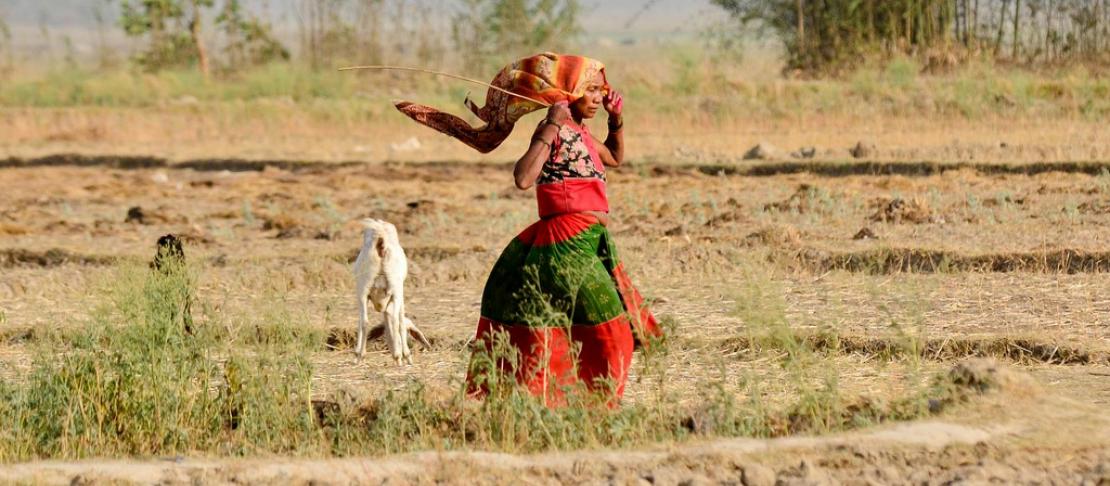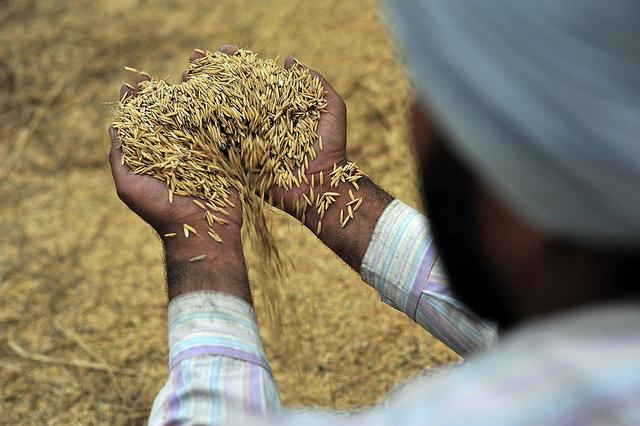Improved index insurance benefits more than 50,000 farmers in India

CCAFS assisted the Agriculture Insurance Company of India Limited with technical guidance on developing rainfall triggers for weather-based insurance products in two states in India
Many farmers in India live under the burden of uncertainty.
Sixty-eight percent of the net sown area in the country falls under rainfed land, and the livelihoods of millions of smallholder farmers are intricately linked to the rains.
Climate change is altering rainfall intensity and patterns in the country. The Fifth Assessment Report of the Intergovernmental Panel on Climate Change (IPCC) projects an increase in extreme rainfall events over central India and an increase in mean and extreme precipitation in the summer monsoon. Even when a farmer has taken every measure to ensure a healthy harvest, a bad spell of weather can destroy all her hopes.
One way for farmers to deal with these changes is to insure themselves against losses arising from weather shocks. Insurance helps farmers manage their risks and continue to invest in inputs and technology that can increase their average yields and income, without worrying about suffering losses and slipping into debt.
Nearly 32 million farmers are insured in India, with 12 million under weather-based index insurance schemes. Weather-based index insurance is a more fair, transparent and quick way to assess crop loss as it uses weather indices, such as rainfall and temperature, rather than a possible consequence of extreme weather, such as crop failure, to determine payouts.
Although these numbers appear massive, relative to other parts of the world, the full potential of weather-based index insurance remains untapped because of technical and operational bottlenecks. This sector is bogged down by lack of transparency, poor awareness about insurance and delays in processing claims.
Why determining accurate weather indices matter
Identifying how weather-based insurance products and schemes can serve farmers better is among CCAFS South Asia’s priority research areas. We work closely with the largest agriculture insurance agency in the country, the Agriculture Insurance Company of India (AIC) Limited, to develop improved rainfall indices that can result in better insurance products.
By studying the correlation between historical crop yields and weather parameters, researchers can generate the ‘triggers’ or weather thresholds beyond which crops begin to suffer. Payouts are structured against these triggers to compensate farmers for their losses. Determining accurate weather triggers is therefore extremely important when designing agriculture insurance products.

DETERMING ACCURATE WEATHER TRIGGERS CAN HELP IN DESIGNING BETTER INDEX-BASED INSURANCE PRODUCTS.
PHOTO: NEIL PALMER, IWMI
Last year, CCAFS worked with the AIC on crop yield loss against rainfall indices in two states in India - Andhra Pradesh and Bihar.
Using spatial databases, we estimated rainfall thresholds that trigger yield loss in different areas and at different stages of crop growth. In the absence of long-term reported yield data, crop models such as InfoCrop and Decision Support System for Agrotechnology Transfer (DSSAT) were used to simulate the relationship between crop yields and historical weather data.
The AIC was able to incorporate the indices into their existing weather-based index insurance products. These refined insurance products were implemented in 32 unit areas in Bihar and Andhra Pradesh for paddy, maize, groundnut, cotton and redgram. According to their figures, in all, 56,623 farmers were insured against weather losses in Nawada district in Bihar and Karimnagar and Mehboobnagar in Andhra Pradesh using these refined triggers.
Proposing an atlas of weather triggers
In April 2014, CCAFS organised a workshop to identify action points for the proposed National Crop Insurance Program of the Government of India. The high-level meeting brought together senior government officials, insurance industry representatives and scientists.
Among the key recommendations was the need to develop an atlas of thresholds for critical weather elements that trigger crop yield losses in different crop growth periods for different agro-climatic regions. The government and the insurance industry could use these as benchmarks when deisgning insurance products and schemes. The workshop also called for data on historical yields and weather to be made available on the public domain to facilitate better research in this area.
The AIC has welcomed CCAFS' guidance and hopes to incorporate improved weather-based indices into several other insurance products targeted at specific crops. There are also plans to experiment options to bundle insurance along with other services in Climate-Smart Villages and to pilot these under the Government's Modified National Agriculture Insurance scheme.
Further reading:
Strategising a new approch to crop insurance in India
How to accommodate farmers wary of rainfall insurance
A call to action: building an index insurance community in Bangladesh
Pramod Aggarwal is Regional Program Leader, CCAFS South Asia. This story was edited by Dharini Parthasarathy, Communications Specialist, CCAFS South Asia



